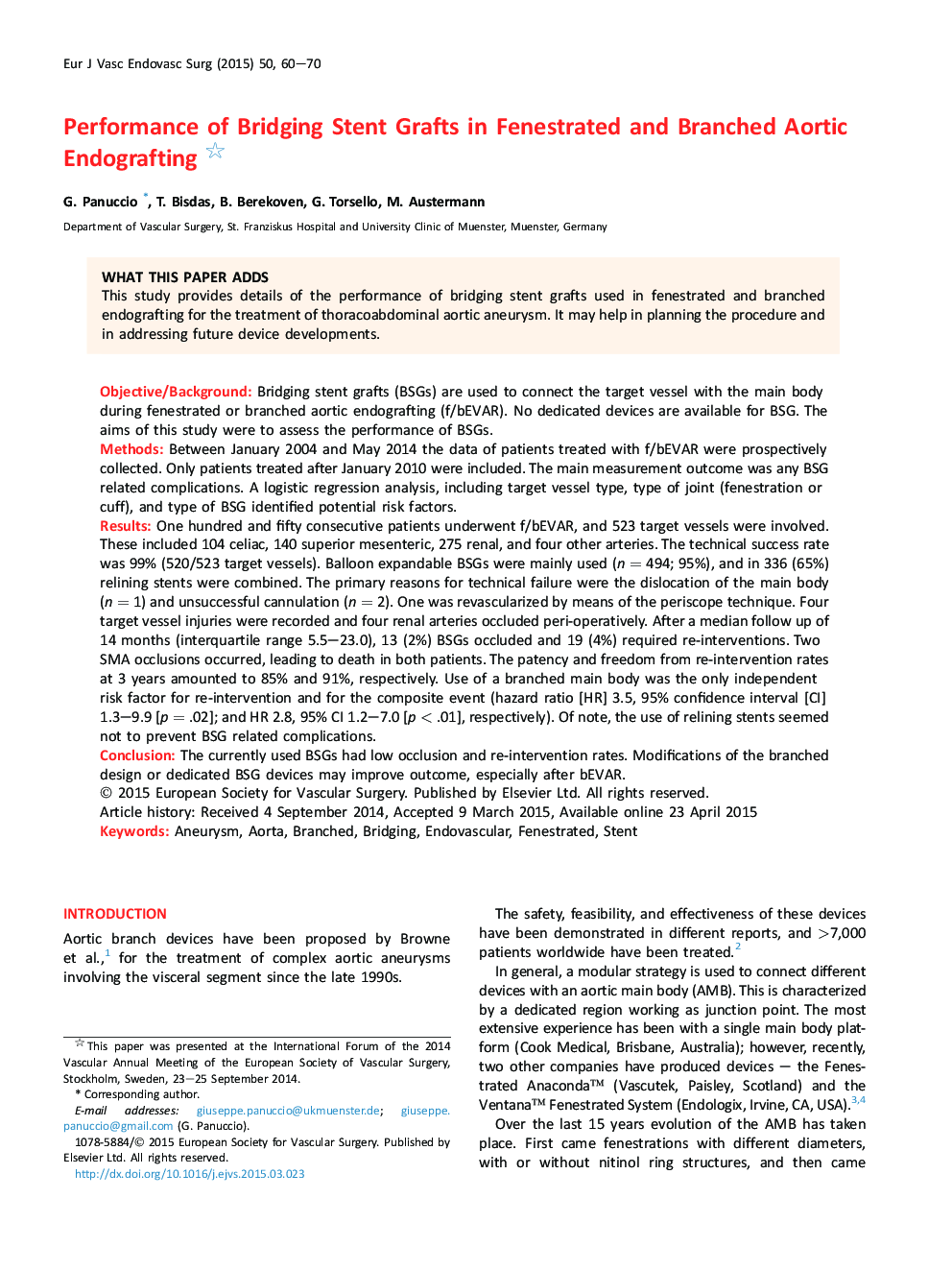| Article ID | Journal | Published Year | Pages | File Type |
|---|---|---|---|---|
| 2911885 | European Journal of Vascular and Endovascular Surgery | 2015 | 11 Pages |
Objective/BackgroundBridging stent grafts (BSGs) are used to connect the target vessel with the main body during fenestrated or branched aortic endografting (f/bEVAR). No dedicated devices are available for BSG. The aims of this study were to assess the performance of BSGs.MethodsBetween January 2004 and May 2014 the data of patients treated with f/bEVAR were prospectively collected. Only patients treated after January 2010 were included. The main measurement outcome was any BSG related complications. A logistic regression analysis, including target vessel type, type of joint (fenestration or cuff), and type of BSG identified potential risk factors.ResultsOne hundred and fifty consecutive patients underwent f/bEVAR, and 523 target vessels were involved. These included 104 celiac, 140 superior mesenteric, 275 renal, and four other arteries. The technical success rate was 99% (520/523 target vessels). Balloon expandable BSGs were mainly used (n = 494; 95%), and in 336 (65%) relining stents were combined. The primary reasons for technical failure were the dislocation of the main body (n = 1) and unsuccessful cannulation (n = 2). One was revascularized by means of the periscope technique. Four target vessel injuries were recorded and four renal arteries occluded peri-operatively. After a median follow up of 14 months (interquartile range 5.5–23.0), 13 (2%) BSGs occluded and 19 (4%) required re-interventions. Two SMA occlusions occurred, leading to death in both patients. The patency and freedom from re-intervention rates at 3 years amounted to 85% and 91%, respectively. Use of a branched main body was the only independent risk factor for re-intervention and for the composite event (hazard ratio [HR] 3.5, 95% confidence interval [CI] 1.3–9.9 [p = .02]; and HR 2.8, 95% CI 1.2–7.0 [p < .01], respectively). Of note, the use of relining stents seemed not to prevent BSG related complications.ConclusionThe currently used BSGs had low occlusion and re-intervention rates. Modifications of the branched design or dedicated BSG devices may improve outcome, especially after bEVAR.
